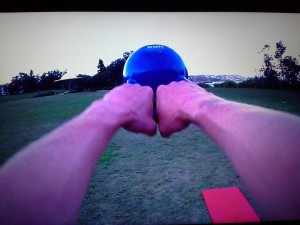
THE ULTIMATE BEGINNER’S 28-DAY CROSSFIT WORKOUT
So you bench press, hit the squat rack, and watch your calories and do your cardio. You do sets and reps and follow your weekly split, but maybe you’re ready for a change. Your crazy friend is always asking you to try CrossFit, but you aren’t sure what it’s all about. Simply put, CrossFit is a fitness program that challenges you to break out of your routine. Stasis is the enemy, and patterns are to be avoided at all cost. Forget about sets and splits, CrossFit works the body as a whole. Just as an athlete would spend some time working on drills and then put those movements to work by playing their sport, CrossFit encourages proficient movement patterns by performing functional movements with relatively high intensity.
1. THE BACKGROUND
CrossFit is the brainchild of Greg Glassman. His fitness philosophy is to build a “broad, general, and inclusive fitness. We have sought to build a program that will best prepare trainees for any physical contingency—not only for the unknown, but for the unknowable. After looking at all sport and physical tasks collectively, we asked what physical skills and adaptations would most universally lend themselves to performance advantage. Capacity culled from the intersection of all sports demands would quite logically lend itself well to all sport. In sum, our specialty is not specializing.” The functional movements that will be utilized are the ones we use in both sport and our daily activities: running, jumping, squatting, lunging, pushing, and pulling.
2. MINDSET
It takes a certain kind of focus and discipline to succeed in any workout program. The key to CrossFit is intensity. Intensity is both relative and actual. We can measure the actual workload of an individual by using physics (mass, distance, and time). This intensity can be compared with other individuals in a direct comparison. Relative intensity refers to how it makes you feel. When you are on the clock doing a workout, push yourself to 80-85% of capacity. Not an all-out sprint that will leave you in a pile after two minutes, but a controlled, fast pace that can be maintained over the entire workout. This is not a “do a set and then rest a minute” program. Avoiding the routine and striving to always challenge the body in new ways isn’t that different from periodization, which most body builders are well-acquainted with, but in CrossFit it is taken to the next level.
3. THE PROGRAM
When you take a CrossFit class, the coach will always start off with some kind of dynamic warmup. The warmup movements will usually be notated as (3 Rounds Not For Time) or something similar. Move through these exercises with purpose and focus. Every WOD (workout of the day) will have a warmup, denoted as part A. Perform these movements for either three or four rounds, as specified under „sets“. The point of a warmup is that by the end of it you’re ready to go full speed. Arm circles before you bench or a lat spread before you do pullups isn’t going to cut it. Get your body moving. When it comes to any piece that has a time component (EMOM, every minute on the minute, or 2 rounds for time) make sure you use a clock and write down your time/reps/weight. CrossFit follows a three-day-on, one-day-off cycle which will not correspond to a day of the week. At the end of this 28-day cycle, you can go back and repeat from day one but should expect better results as your fitness will be at a greater level than before.
